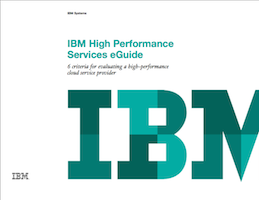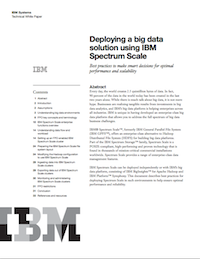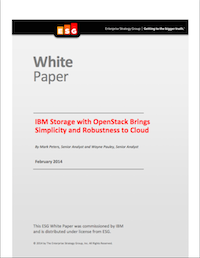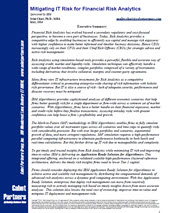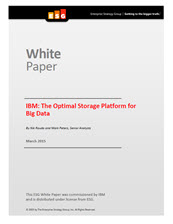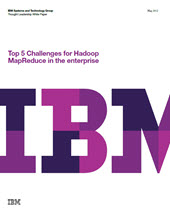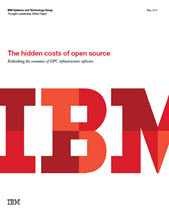Software defined infrastructure (SDI) enables organizations to deliver HPC services in the most efficient way possible, optimizing resource utilization to accelerate time to results and reduce costs. Software Defined Infrastructure is the foundation for a fully integrated environment, optimizing compute, storage and networking infrastructure to quickly adapt to changing business requirements, and dynamically managing workloads and data, transforming a static infrastructure into a workload- , resource- and data-aware environment.
Big Data Solution Using IBM Spectrum Scale
Businesses are discovering the huge potential of big data analytics across all dimensions of the business, from defining corporate strategy to managing customer relationships, and from improving operations to gaining competitive edge. The open source Apache Hadoop project, a software framework that enables high-performance analytics on unstructured data sets, is the centerpiece of big data solutions. Hadoop is designed to process data-intensive computational tasks, in parallel and at a scale that previously were possible only in high-performance computing (HPC) environments.
IBM Under Cloud Cover Study
Simply put, it’s an evolution. Cloud computing is following the same pattern of other technologies that have shaped business and society. Take electricity, for example. Even after the first public power supply lit the streets, it took time for businesses to learn how to really capitalize on this new technology. In those early days, people were enthralled by artificial lighting – one of the earliest applications of electricity. Very few could fathom the innumerable product innovations, business models and industries that would ultimately be built upon this technology.
OpenStack Storage with IBM
This paper reviews the increasingly popular OpenStack cloud platform and the abilities that IBM storage solutions provide to enable and enhance OpenStack deployments. But before addressing those specifics, it is useful to remind ourselves of the “whys and wherefores” of cloud computing.
Analytics across the ecosystem
Analytics is a key enabler for life sciences and healthcare organizations to create better outcomes for patients, customers and other stakeholders across the entire healthcare ecosystem. While almost two-thirds of organizations across the healthcare ecosystem have analytics strategies in place, our research shows that only a fifth are driving analytics adoption across the enterprise. The key barriers are a lack of data management capabilities and skilled analysts, as well as poor organizational change management. To find out more download this white paper.
Mitigating IT Risk for Financial Risk Analytics
Financial Risk Analytics has evolved beyond a secondary regulatory and cost-focused perspective, to become a core part of businesses. Today, Risk Analytics provides a competitive edge by enabling businesses to efficiently use capital and manage risk exposures with higher confidence to make better informed and timelier business decisions. To learn more down this white paper.
IBM: The Optimal Storage Platform for Big Data
There is a lot of hype around the potential of big data. Organizations are hoping to achieve new innovations in products and services with big data and analytics driving more concrete insights about their customers and their own business operations. To learn more download this white paper.
Hadoop for Dummies
Welcome to Hadoop For Dummies! Today, organizations in every industry are being showered with imposing quantities of new information. Along with traditional
sources, many more data channels and categories now exist. To learn more about Hadoop download this guide.
Top 5 Challenges for Hadoop MapReduce in the enterprise
Reporting and analysis drives businesses in making the best possible decisions. The source of all these decisions is the data. We explain the top 5 challenged for Hadoop MapReduce in the enterprise. Learn more by downloading this white paper.
The hidden costs of open source
Clusters based on open source software and the Linux® operating system have come to dominate high performance computing (HPC). This is due in part to their superior performance, cost effectiveness and flexibility. To learn more download this white paper.

